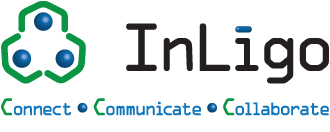
Enhancing Cybersecurity Posture with InLigo’s Framework and Microsoft 365 Protective Technology.
Protective Technology
Protective Technology is part of Microsoft Intune cloud-based endpoint management solution.
It manages user access and simplifies app and device management across your many devices, including mobile devices, desktop computers, and virtual endpoints. You can protect access and data on organization-owned and user devices.
InLigo can help guild you through best practices in building a proper protective technology plan for managing your devices.
WHAT IS YOUR SECURITY SCORE?
Identity Management and Access Control
Managed technology security solutions help to ensure the security and resilience of systems and assets, consistent with related policies, procedures, and agreements.
InLigo’s Discovery Questions
- Can a user access their corporate data on their personal device?
- Can a user save corporate data to their personal storage?
- How do you prevent data loss to a lost or stolen device?
- How do you prevent data loss when an employee leaves the company or is fired?
- Do users send documents and emails with sensitive company info externally without you knowing?
- How do you know if data is being accessed on a device with malware?
- What resources are accessed off your corporate network?
Microsoft 365 Solution
- Intune, Conditional Access, Data Los Prevention, Azure Information Protection, Microsoft Defender
- Device Level
- User Level
- Application Level
Business Case
A user’s device is infected and malware. They do not know their computer is infected and they try to access corporate data. We setup a conditional access policy to prevent access if the device is in an unhealthy state. The user will get a message about this when they try to sign-in and will reach out about the problem.
Action Items
- Understand what devices types you will support from a Mobile Device Management standpoint
- Create a Compliance Policy for each Device type you defined above.
- Enroll Devices into MDM
- Create an app protection policy for Windows, iOS, and Android devices for mobile application management
- Create AIP Labels custom to the business needs
- Set up a Policy for ATP Safe Links and Safe Attachments
- Set up a policy for Anti-phishing

